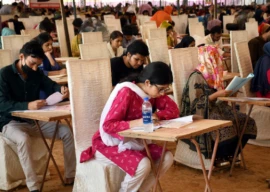
On June 20, Planning Minister Ahsan Iqbal launched Pakistan’s first-ever report on multidimensional poverty. Poverty is not just an absence of money, a measurement of income and wealth; it is a collection of indicators that add up to a much deeper understanding of the phenomenon and the Multidimensional Poverty Index may be a significant planning tool for the future. Factors such as access to education and healthcare alongside the overall standard of living make an appearance, as does an understanding that some experience poverty as something that is cyclic, rather than a steady and immutable state.

As with any report such as this, there is both good and bad news, though ‘good’ in this context is perhaps better understood as ‘less bad’. The headline is that four out of 10 people in Pakistan are living in acute poverty, and the secondary headline is that there has been a sharp decline in national poverty rates which have fallen from 55 per cent in 2004 to 39 per cent in 2015. We would attach some caution to this figure if only because the standards of measurement in 2004 were not what they are today, but there is sufficient consistency in data to be able to say with confidence that overall Pakistan is becoming less poor, and less poor across a range of indicators.
Much of what we learn is not new news, but a more detailed picture, less fuzzy, than what was before. Thus it is no surprise to learn that Balochistan has the highest incidence of acute poverty and Punjab, particularly northern Punjab, the lowest. The rural-urban divide is stark. The majority of the rural population — 54.6 per cent — are living in acute poverty as compared to a ratio of 9.4 per cent in urban areas, though there are inconsistencies even with the densely populated cities, where grinding poverty may be no less for city dwellers than their country cousins. The obvious need to make rural-centric planned interventions has been on the radar for many years, but vote banks are shifting, populations are leaving the land for the cities, and the cities are home to the largest voting populations.
Although there is no political component to the report, a look at the map of poverty illustrates where the power lies and where poverty levels are lowest. Upper Punjab has by far the best — healthiest — indicators — where there are more schools, better health facilities and fewer people dipping in and out of poverty. They are more food-secure giving their children a better start in life and the national inequities are picked out in detail. Sindh is in a desperate condition as is Balochistan. Poverty levels have stood still in Khyber-Pakhtunkhwa over the last two years — but have reduced everywhere else even if marginally.
The report is only what it is — a report. It is only a planning document if there is a political decision to make it so, to turn it into policies on the ground. It needs to feed through to a road map of priorities in health, education, infrastructure and preparing for the swing from a nation of farmers living on the land to a nation of urbanites. That swing has gathered momentum in the last decade and seen rural areas depopulated and depressed. Making this report work for the poor people of Pakistan is a political challenge — a challenge that sadly is likely to lie unaddressed for the foreseeable future.
Published in The Express Tribune, June 22nd, 2016.
Like Opinion & Editorial on Facebook, follow @ETOpEd on Twitter to receive all updates on all our daily pieces.






1735025557-0/Untitled-(96)1735025557-0-270x192.webp)











COMMENTS
Comments are moderated and generally will be posted if they are on-topic and not abusive.
For more information, please see our Comments FAQ